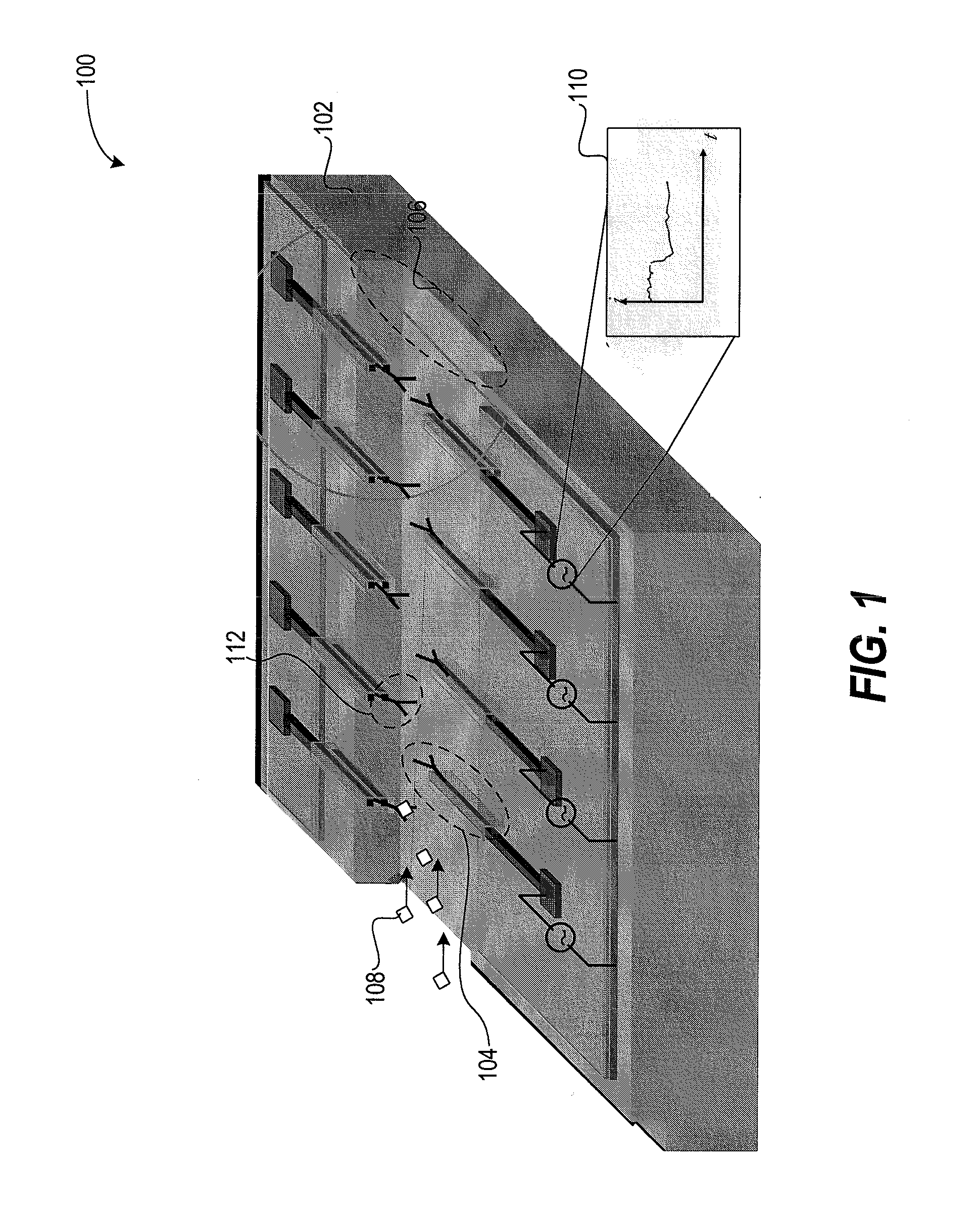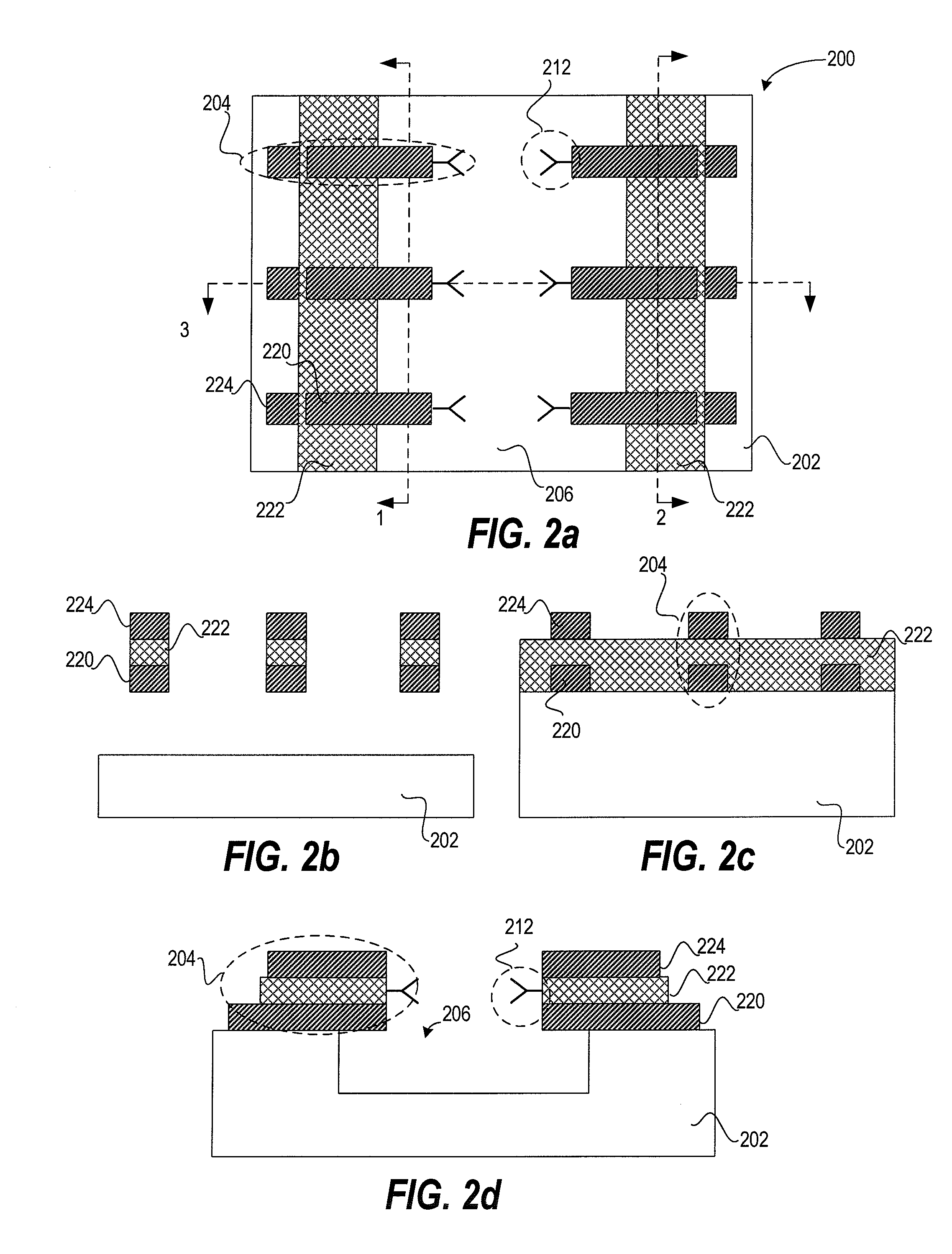Nano-sensor array
a technology of nano-sensors and arrays, applied in the field of chemical and biological particle detection, can solve the problems of low signal to noise ratio (snr) of devices, inability to provide real-time monitoring of electrical biosensors, and inability to detect biological particles
- Summary
- Abstract
- Description
- Claims
- Application Information
AI Technical Summary
Benefits of technology
Problems solved by technology
Method used
Image
Examples
Embodiment Construction
[0031]In one or more embodiments, a cost effective nano-sensor array is provided having a plurality of horizontal nano-sensors having sensing ends formed above a channel region of a base. The sensing ends of the nano-sensors are configured to bind with target particles present in a sample present in the channel. The unique structure of the horizontal nano-sensors exhibits a change in impedance between two terminals of the nano-sensor in response to the binding of target particles. Using this structure, the presence of target particles of interest may be electrically detected with high sensitivity by measuring the impedance of the sensors. In this manner, target particles may be electrically detected with high sensitivity without the use of fluorophores or other labels. The examples and embodiments discussed herein may be described with reference to the detection of either particles or molecules and such terms are used interchangeably herein.
[0032]The horizontal nano-sensors may be f...
PUM
| Property | Measurement | Unit |
|---|---|---|
| acceleration voltage | aaaaa | aaaaa |
| width | aaaaa | aaaaa |
| width | aaaaa | aaaaa |
Abstract
Description
Claims
Application Information
 Login to View More
Login to View More - R&D
- Intellectual Property
- Life Sciences
- Materials
- Tech Scout
- Unparalleled Data Quality
- Higher Quality Content
- 60% Fewer Hallucinations
Browse by: Latest US Patents, China's latest patents, Technical Efficacy Thesaurus, Application Domain, Technology Topic, Popular Technical Reports.
© 2025 PatSnap. All rights reserved.Legal|Privacy policy|Modern Slavery Act Transparency Statement|Sitemap|About US| Contact US: help@patsnap.com



